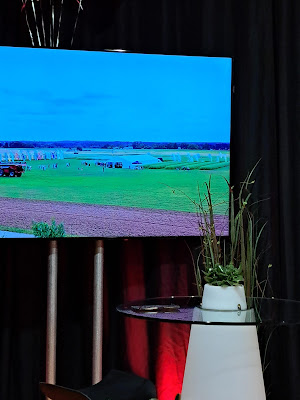Hea sööda abil stabiilsema piimatoodangu suunas
„Kätte on jõudnud aeg, kus farmides võetakse kasutusele uued silod ning kohe-kohe hakkavad järgemööda söödaks minema ka selle aasta teraviljad, raps ja muud söödamaterjalid. Ent uute söötade energia- ja toitainete sisaldused pole enamasti täpselt sama, mis möödunud aasta toormetel. Tekivad muutused söödalaval.“
Täispikk artikkel on leitav Scandagra kodulehel. Klikka
SIIA.
This time of the year new silage and other new raw materials for feed production will be taken into use in farm. However, content of nutrients of new raw materials is usually different comparing of old once. There will be changes in feedlot which are clearly seen in farms. Feed rations need to be balanced according to the energy and nutrient content of the new raw materials.
Limitations at any stage of feed production, whether it is improperly taken or stored feed samples or unevenly mixed feed materials, are reflected in the cow's ration and milk production.
Feed plants can support farmers in many different feed related activities. For example, feed plants can help farmers in calculating and balancing feed rations. There is a special software used by many feed plants which is allowing to design complementary feeds according to the needs of a particular farm. Feed mills has their own laboratory capacities. Analyzing of raw materials and complementary feeds belonging to the daily routine of most of the feed plants. Results of the analyzes are available for customers as well. When buying feed from a feed plant, it’s good to figure out what kind of additional services feed manufacturer can provide in addition of selling feeds or feed raw materials.
The period of transition to new feeds is a difficult time on the farm. Raw material laboratory analyzes undoubtedly mean additional expenses, and the constant monitoring of cows and the interpretation of the obtained data is time consuming. However, all these activities will help to make the rations more precise covering animal needs for energy and nutrient in better way. This, in turn, is reflected in a more stable milk production and helps to prevent many unwanted surprises on the farm.
Scandagra can help farmers in different feed related activities:
- If you need help in taking of silage samples or delivering it to the laboratory, please contact your customer manager. We have the necessary tools and skills for taking samples.
- Scandagra can support its customers in balancing feed rations according to silage data received from the laboratory and information from the farm. We are also ready to come to the farm for a more detailed overview.
- We can develop complementary feeds according to the needs of a particular farm by using of BESTMIX® software (www.bestmix.com).
- In the Scandagra Viljandi laboratory, we carry out regular laboratory analyzes for complementary feeds and feed raw materials. Results arrive quickly, usually the same business day or the next business day at the latest. We also share the results of laboratory analyzes with our customers upon request.
Article full text in Estonian is available
HERE.
For more information about our feed related activities please contact to:Mats Merits
Sales Specialist
Address: Tähe 13, Viljandi, EE-71020, Estonia
















